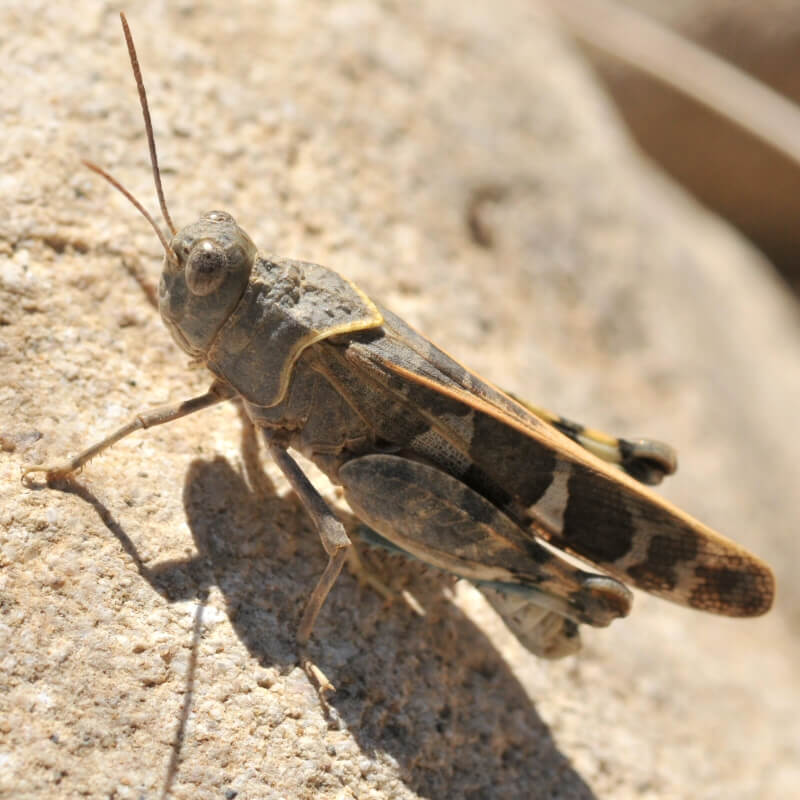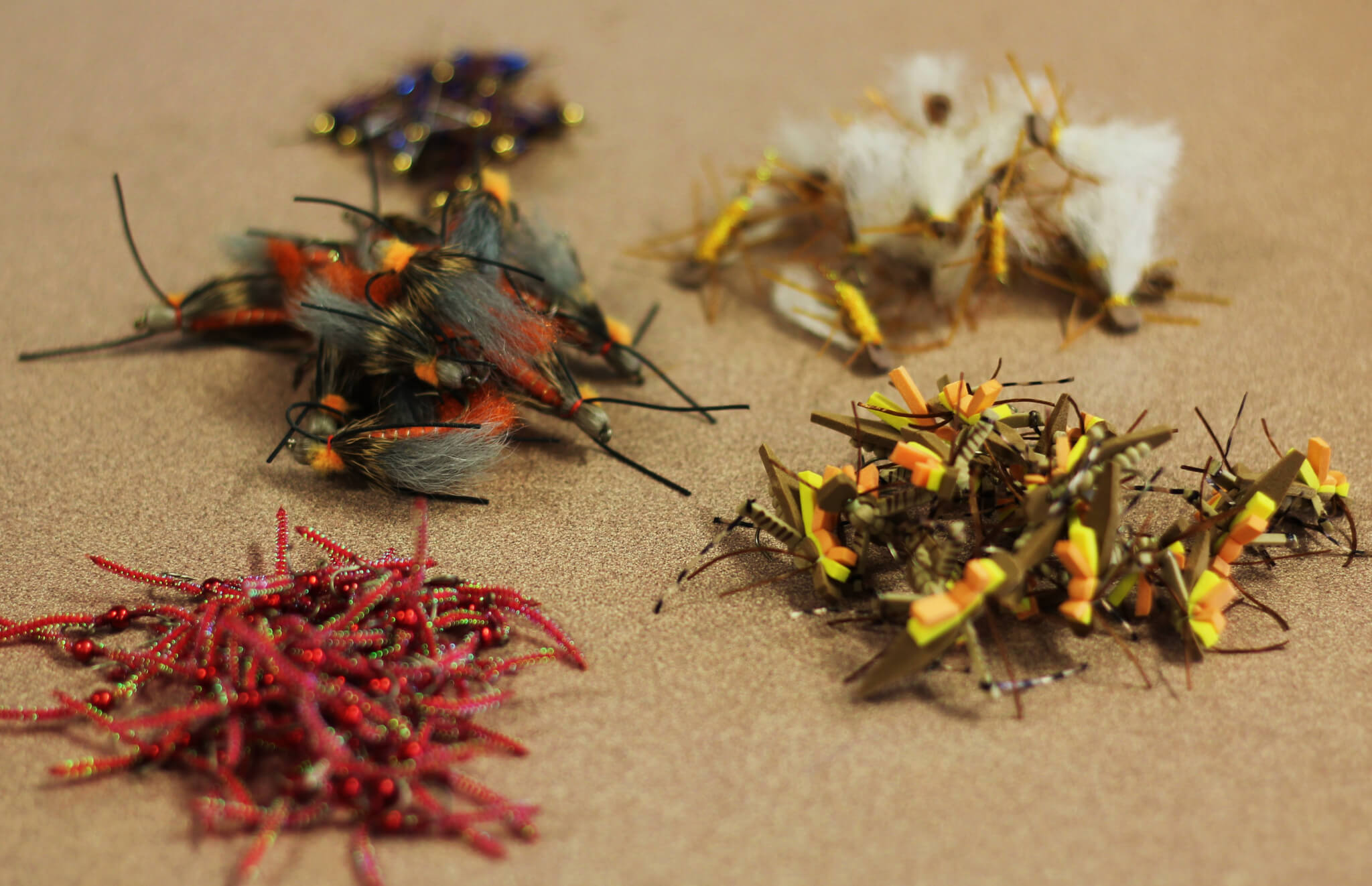Hoppers

Hoppers Overview
- Family: Terrestrial
- Size: 12-30mm (Size 6-14)
- Emergence: Mid July through October
- Emergence Time: All Day
Hopper fishing in Montana is about the same as it is everywhere else. Spotty most of the time, and good when conditions are tricky! Goes without saying, but hoppers don’t like the water, and avoid it at all costs. It’s the “W” word (wind, but don’t say it!) that drives hoppers into the water, and that’s not always fly fishing fun. But when the hopper fishing is on, it’s some of the most exciting, rewarding fishing you can find!
Fly Fishing Hoppers
It’s wise to carry a wide variety of hopper shapes and colors. Strange as it may seem, trout see more hopper imitations than any other hatch. Hoppers start being important in late July and sometimes work into October, weather depending. That’s a long window for a “hatch”! Missoula fly fishing guides will buy hoppers in crazy colors and odd sizes, making sure they’re not throwing the “same old thing.” While you need to have confidence in your fly, and perhaps a blue one doesn’t bring that on, it’s not a bad idea to have a wide spread of hoppers.
We can’t begin to tell you how many species of grasshoppers we have in Montana. Hoppers run anywhere from size 6 to 16, and range in color from yellow through green and tan. Most hoppers maintain the same shape, and often the most prominent feature to a trout is the grasshopper’s legs.
There are times when any hopper we have in the fly shop will work, and other times trout are looking for something very specific. Patience is critical for hopper fishing.
It often takes an accurate cast close to the bank to move fish. Always a tricky cast when dealing with side currents and “W”. We recommend using a slightly longer, slightly heavier tippet for the best hopper presentation. The longer tippet provides better presentations while the thicker tippet is easier to cast in the localized sideways movement of air (W word).
It’s not called Hopper/dropper for nothing. With less bio-mass present in the river around Missoula and across Montana, fish are looking more intently for food, ranging a little further for their meals, surface or sub-surface. But more sub-surface! With the high skies and bright sun of August, trout will hug the bottom and the banks, rising rarely but feeding steadily sub-surface. Big foam hoppers are very popular for floating droppers.
Hoppers line the banks of the Blackfoot River, Clark Fork River, Bitterroot River and Rock Creek. Working the banks is very important in the higher gradient Blackfoot River and Rock Creek, because trout enjoy the protection from current the bank often provides. Hoppers on the lower gradient Clark Fork River and Bitterroot River will pull trout up from deeper, slower water, but gives the trout a longer window to decide go or no-go. Missoula, Montana offers a wide variety of grasshopper fly fishing, you just have to choose your river.

